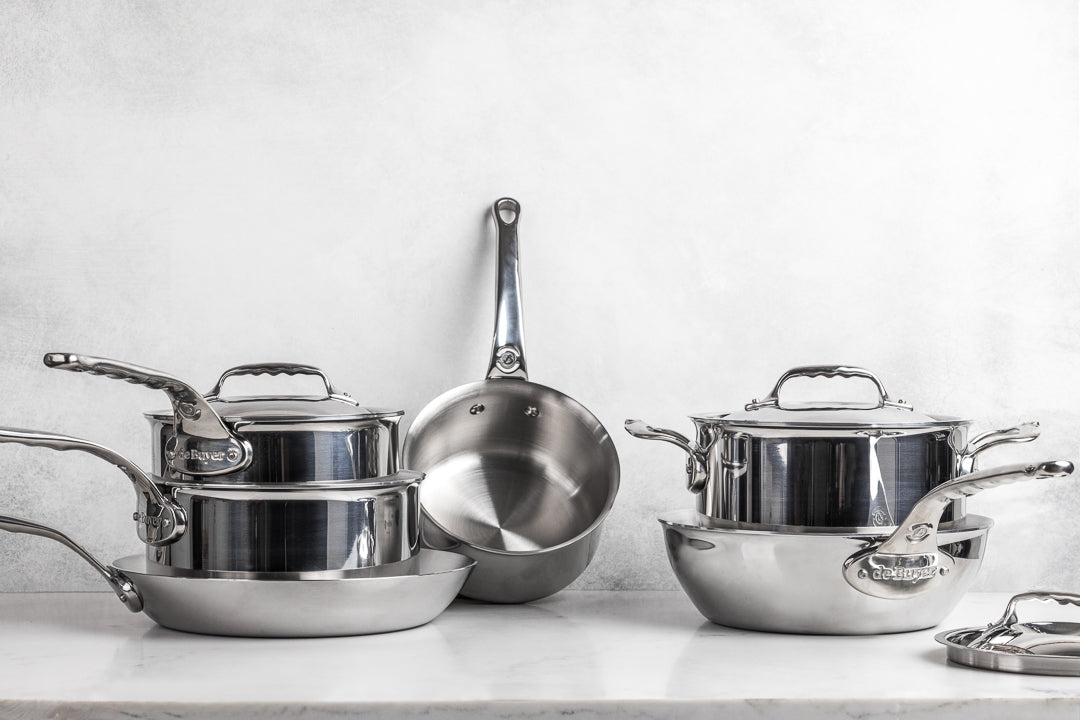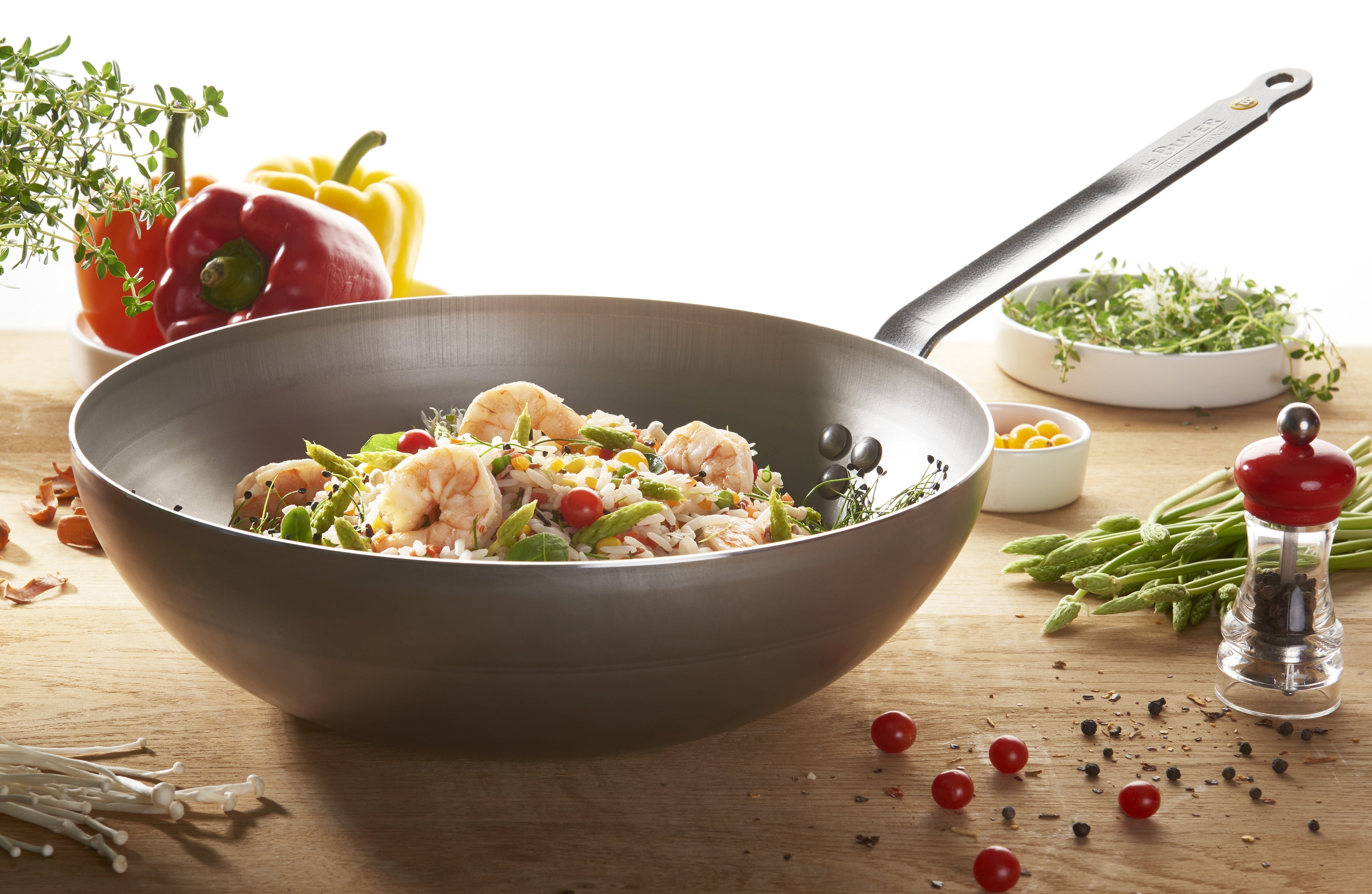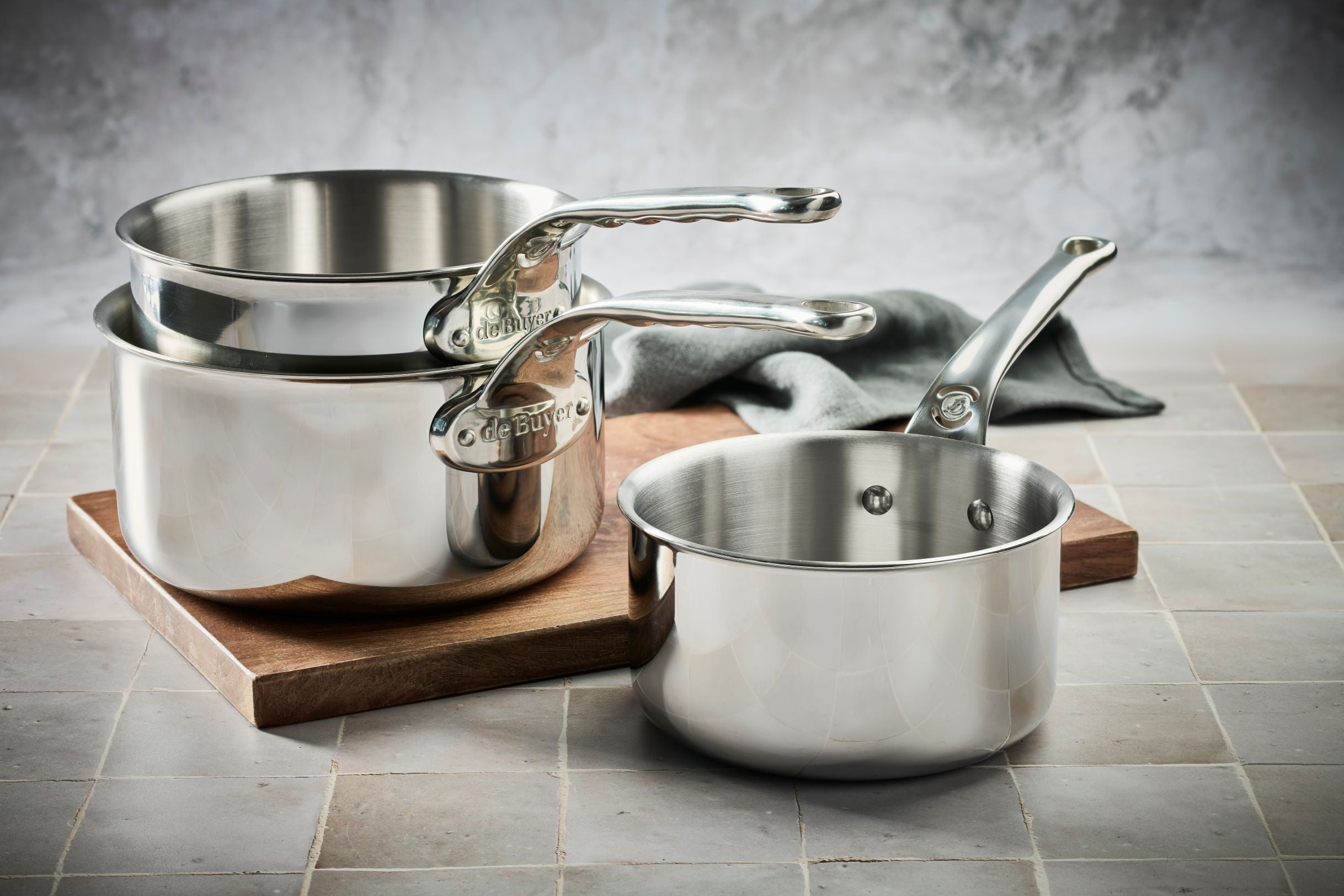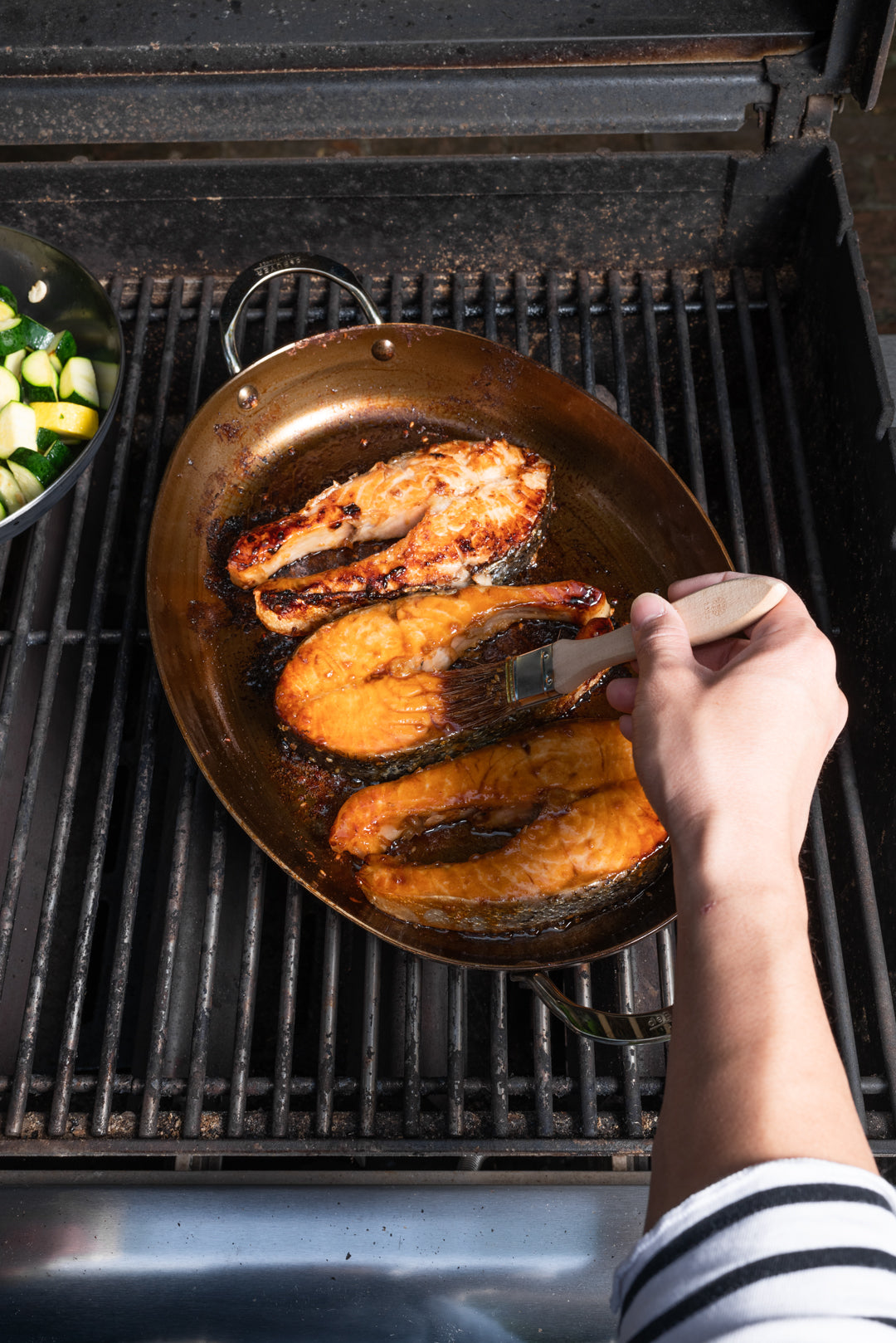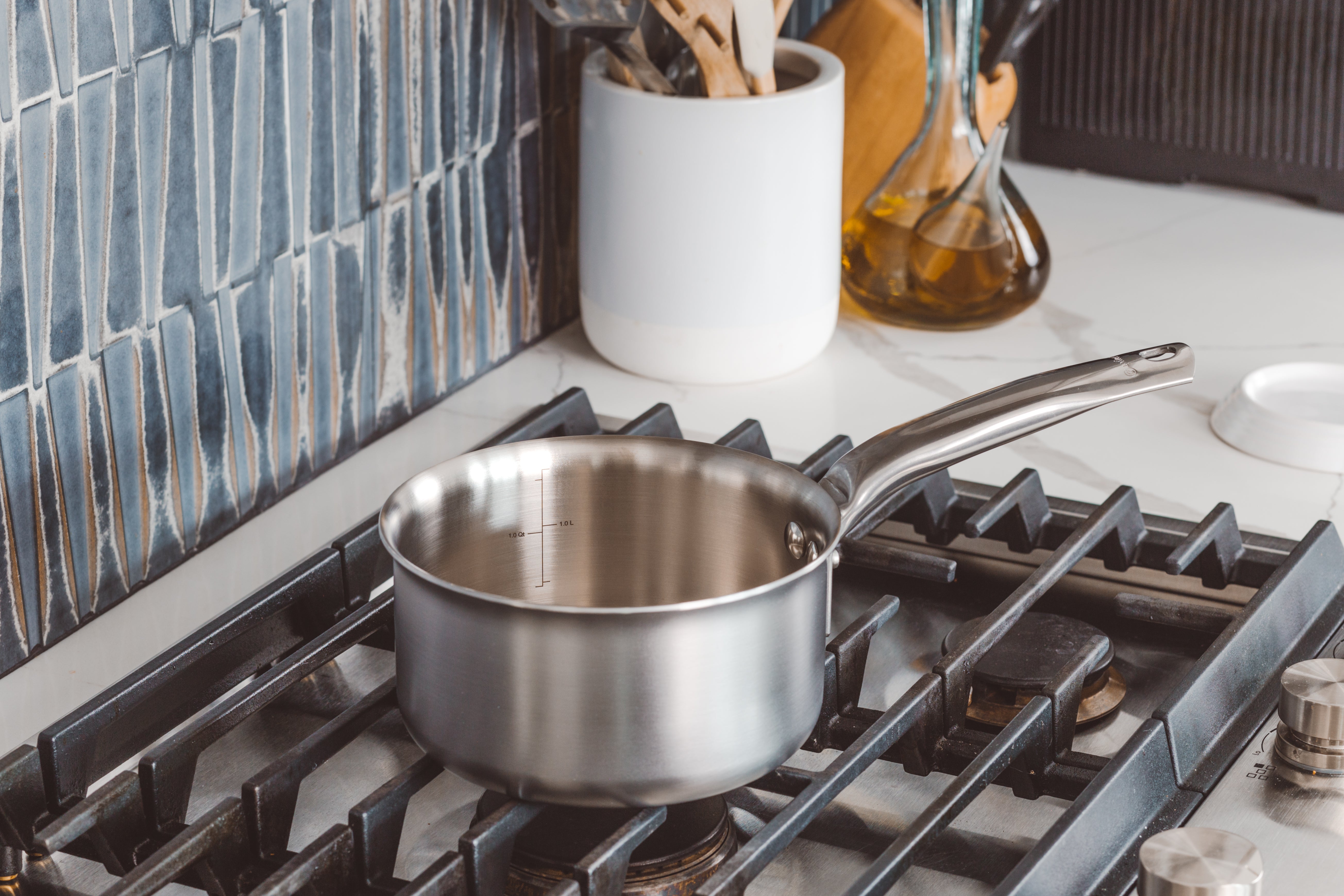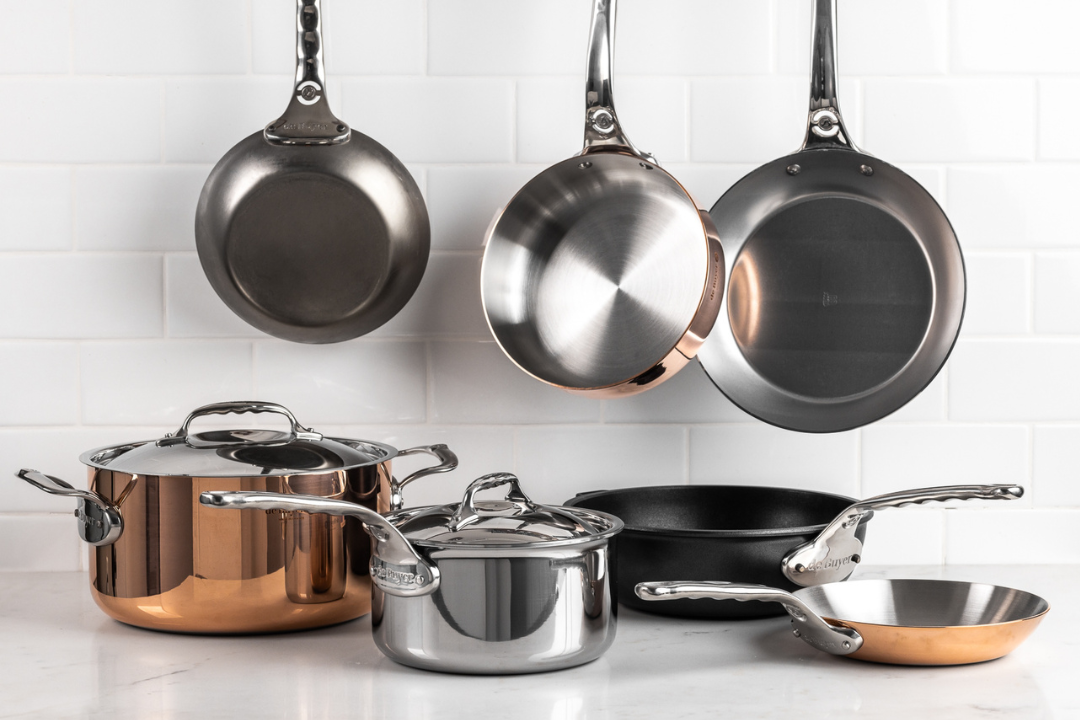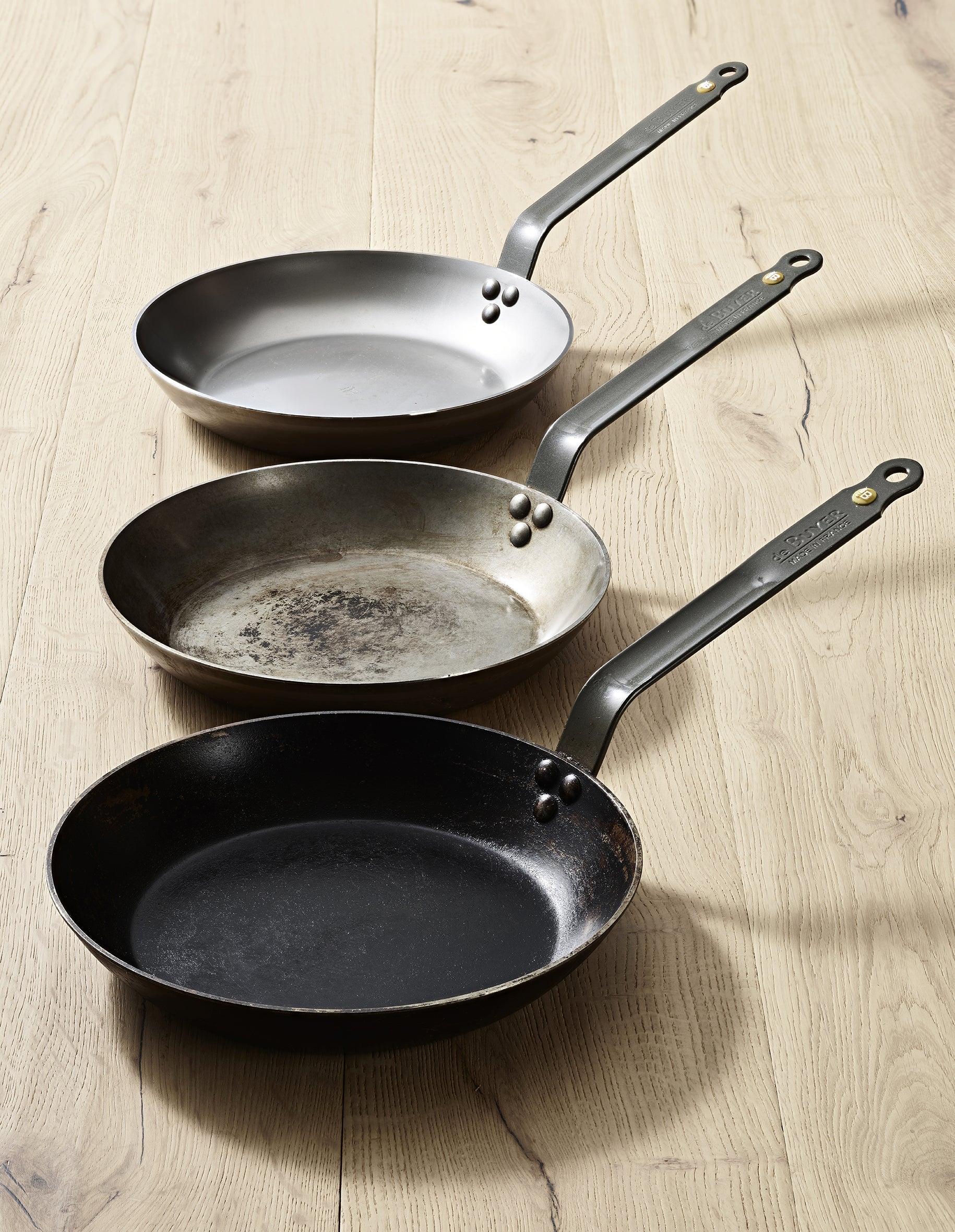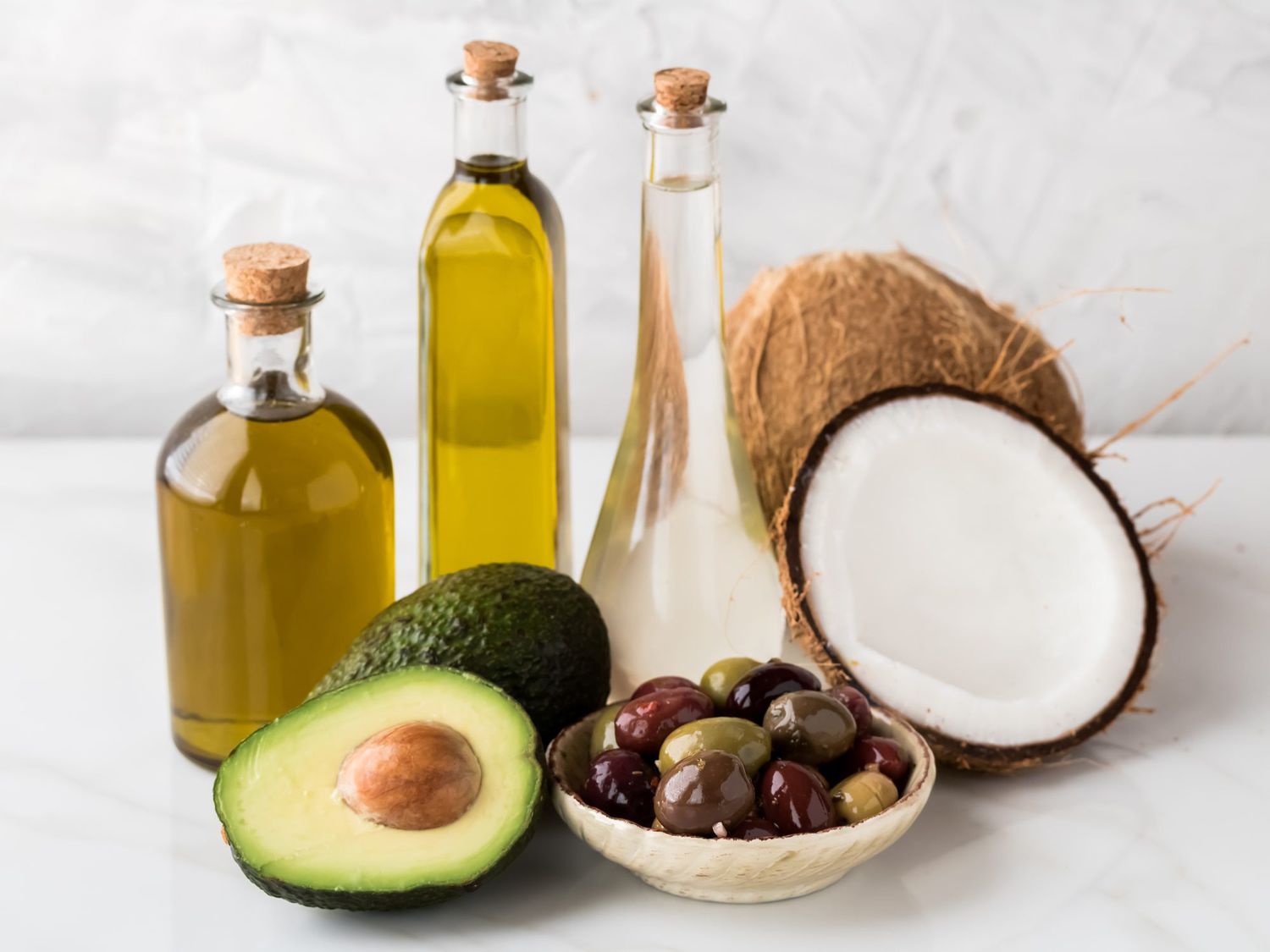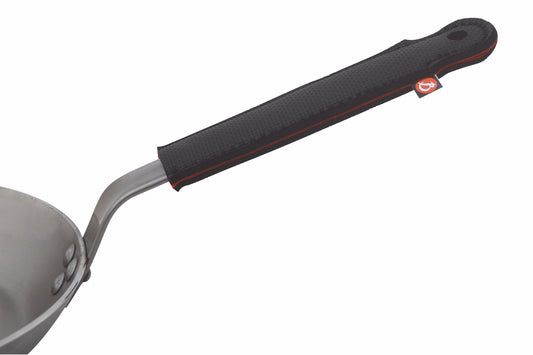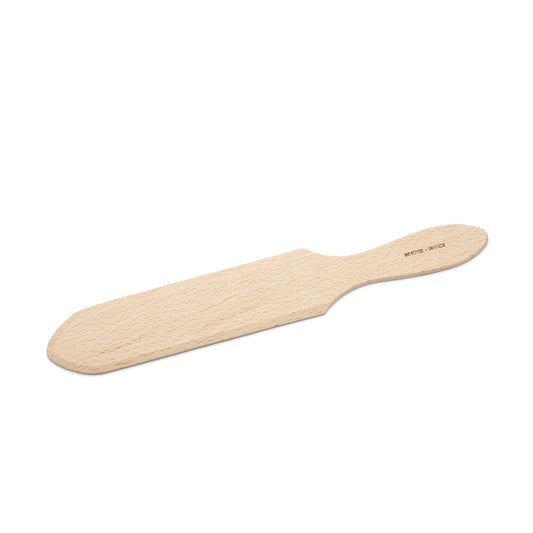Is Carbon Steel Cookware Safe for Cooking?
Is stainless steel cookware safe? Both carbon steel and stainless steel are safe and durable cookware options when used appropriately. Learn more here.
de Buyer

Is Carbon Steel Cookware Safe for Cooking?
(And How It Compares to Stainless Steel)
Key Takeaways
- Carbon steel and stainless steel are both non-toxic, coating-free materials that offer safe, high-performance cooking when properly maintained.
- Carbon steel is made of just iron and carbon, and develops a naturally nonstick patina through seasoning—not chemical coatings—making discoloration and dark spots completely normal and safe.
- Stainless steel’s non-reactive surface resists rust and corrosion, although it may contain nickel, which is safe for most people but may require caution for those with nickel sensitivities.
- To ensure safe cooking and long-term performance, both materials require proper care—carbon steel must be seasoned and dried thoroughly, while stainless steel benefits from heat control and gentle cleaning.
Yes, carbon steel and stainless steel are safe when used properly. Safety is always a primary and reasonable concern for both professional chefs and at-home cooks. Over the years, layers of the pots or pans can start to degrade, especially with certain types of materials. So, when it comes time to choose cookware, you want to ensure it is made from non-toxic materials.
This article will explain materials, use cases, and maintenance tips for carbon and stainless steel cookware.
Are you searching for high-quality carbon steel pans? Explore our durable and professional-grade line of carbon steel products at de Buyer.
What is Carbon Steel Made Of?
Carbon steel is composed of 99% iron and 1% carbon, with no synthetic coatings, PFAS, PTFE, or other chemicals. The result is a thick, heavy-duty material used to make a variety of cookware and food prep utensils. It’s widely used in professional kitchens because it’s highly heat-tolerant, safe, and long-lasting.
The unique construction of carbon steel also allows for a naturally nonstick surface, achieved through seasoning rather than chemical treatments, unlike some other nonstick cookware.
Some cooks worry that the dark patina or spots that develop on a carbon steel pan are signs of something unsafe, but this is a normal occurrence. It’s just the seasoning layer, and it actually helps protect your food and your cookware.
Like all metal cookware, carbon steel is susceptible to rust. This is a natural reaction to moisture and not a health risk. There are ways to safely prevent and remove rust from carbon steel cookware.
What is Stainless Steel Made Of?
Stainless steel cookware is either made entirely of stainless steel or is composed of a combination of stainless steel, iron, chromium, and sometimes nickel (depending on the grade).
Some people express concern about nickel leaching, but it’s important to know that:
- High-quality stainless steel (like de Buyer’s) is food-safe and extremely stable
- Any leaching that occurs is minimal and well within safe consumption levels
- For those with nickel sensitivities, nickel-free stainless steel options are available
Like carbon steel, stainless steel is naturally nonstick. This occurs due to the chromium (a natural element) present in the stainless steel. Chromium reacts with oxygen to form a protective layer, making stainless steel non-reactive and resistant to rust or corrosion.
This is not to say that stainless steel has a nonstick coating. It has natural nonstick properties, but will only perform as intended when used correctly.
What Types of Cookware Are Considered Unsafe?
While de Buyer carbon steel and stainless steel contain no coatings or additives, there are cookware tools that do. Be aware of brands that use the following materials and coatings.
PTFE/Teflon Nonstick Coatings
PTFE (commonly known as Teflon) is a synthetic nonstick coating that starts to break down when exposed to temperatures above 500°F. When overheated, it can release toxic fumes that may cause flu-like symptoms in adults (known as “Teflon flu”) and may be deadly to household pets and infants. Scratched or deteriorated Teflon coatings may also flake off into food.
Aluminum Without Anodization or Cladding
Bare aluminum is a soft, highly reactive metal. When used in cookware, it can react with acidic foods, such as tomatoes, vinegar, or citrus, resulting in a metallic taste and the potential for aluminum leaching. Anodized or clad aluminum has a protective barrier that prevents this reaction, making it much, much safer.
Cookware With Unknown Coatings or Fillers
Some inexpensive or unregulated cookware may contain mystery materials, such as synthetic coatings or hidden fillers, that aren’t disclosed on the label. These coatings can degrade or leach harmful chemicals when heated. If the manufacturer doesn’t identify what the cookware is made of, it’s best to avoid it entirely.
Best Practices to Cook Safely With Carbon and Stainless Steel
Today, there are numerous materials to choose from for your cookware. Stainless-steel clad, copper cookware, cast iron, and carbon steel are some of the most popular options. As long as you follow the care and use instructions for the cookware, they are safe to use.
Below are the best care and cooking instructions for carbon steel and stainless steel.
Cooking With Carbon Steel
If you want a material that can tolerate the highest levels of heat (1200°F), carbon steel cookware is the best option. It’s an incredibly durable and resilient cookware material that will serve you well in high and flash heat cooking.
Carbon steel will also have a nonstick surface with regular use. Use the following guidelines to maintain this nonstick surface and practice safe cooking with carbon steel:
- Always dry thoroughly after washing.
- Maintain seasoning with light oiling after use.
- Avoid prolonged cooking of highly acidic foods until seasoning is well established.
- Re-season as needed.
Cooking With Stainless Steel
The first thing to keep in mind when cooking with stainless steel is to use medium to high heat, but avoid overheating an empty pan. Stainless steel distributes heat evenly, so you don't need the highest setting to get a great sear.
Preheating an empty pan for too long can cause warping or discoloration, and it can also make food stick. Do your best to keep the heat moderate and steady.
Second, preheat with care and add oil after heating for optimal release. For a natural nonstick effect, heat your pan first, then add oil. Let the oil heat until it shimmers (not smokes). This helps create a barrier that reduces sticking and is especially helpful when cooking proteins like eggs or fish.
Finally, you need some cleaning tips. Keep the following guidance in mind:
- Clean with stainless-safe tools: For daily cleaning, use warm, soapy water. For stubborn spots or discoloration, a paste made from baking soda and water, or a splash of vinegar, can safely restore shine without damaging the surface.
- Avoid chlorine-based cleaners: Chlorine and bleach-based cleaners can corrode stainless steel and damage its protective layer. Stick to stainless-specific or gentle, non-abrasive cleaners to preserve your cookware's performance and appearance.
What Can You Cook in Each Type of Pan?
|
Food Type |
Best in Carbon Steel |
Best in Stainless Steel |
|
Searing meats |
Yes |
Yes |
|
Sauces & deglazing |
Not ideal |
Yes |
|
Eggs/omelets |
Well-seasoned only |
Can stick if untrained |
|
Acidic dishes |
Use caution |
Yes |
|
Stir-frying |
Yes |
No |
|
Everyday sautéing |
Yes |
Yes |
Both stainless steel and carbon steel are excellent materials for kitchen use. They are both versatile tools, but stainless steel may be best suited for beginners, while carbon steel is ideal for high-heat enthusiasts. Practice with your chosen cookware material until cooking on it is second nature.
Safe, Sustainable, and Built to Last
Both carbon steel and stainless steel are excellent, safe, and sustainable cookware options.
Carbon steel shines in high-heat cooking and develops a naturally nonstick surface through seasoning, while stainless steel offers stability, ease of maintenance, and resistance to rust and reactivity.
Plus, the benefits of cookware made without coatings or synthetic treatments are innumerable, and these cookware pieces will ensure safe cooking and last for ages.
Explore de Buyer’s carbon steel and stainless steel cookware—made in France with professional quality, everyday safety, and long-lasting performance.
Learn More
Recommended for You
-
MINERAL B PRO Carbon Steel Fry Pan
Regular price $100.00Regular priceUnit price / per$0.00Sale price $100.00 -
MINERAL B Classic Carbon Steel Fry Pan
Regular price $65.00Regular priceUnit price / per -
MINERAL B Carbon Steel Omelette Pan
Regular price $75.00Regular priceUnit price / per -
MINERAL B PRO Carbon Steel Omelette Pan
Regular price $120.00Regular priceUnit price / per -
Protective Sleeve for Pan Handle
Regular price $9.95Regular priceUnit price / per -
MINERAL B Carbon Steel Crepe & Tortilla Pan
Regular price $65.00Regular priceUnit price / per -
Blue Carbon Steel Fry Pan
Regular price $50.00Regular priceUnit price / per -
Blue Carbon Steel Crepe & Tortilla Pan
Regular price $25.00Regular priceUnit price / per -
MINERAL B Carbon Steel Country Fry Pan
Regular price $110.00Regular priceUnit price / per -
MINERAL B Carbon Steel Egg & Pancake Pan
Regular price $40.00Regular priceUnit price / per -
Blue Carbon Steel Rectangular Baking Sheet
Regular price $40.00Regular priceUnit price / per -
B BOIS Crepe Spatula
Regular price $8.00Regular priceUnit price / per

